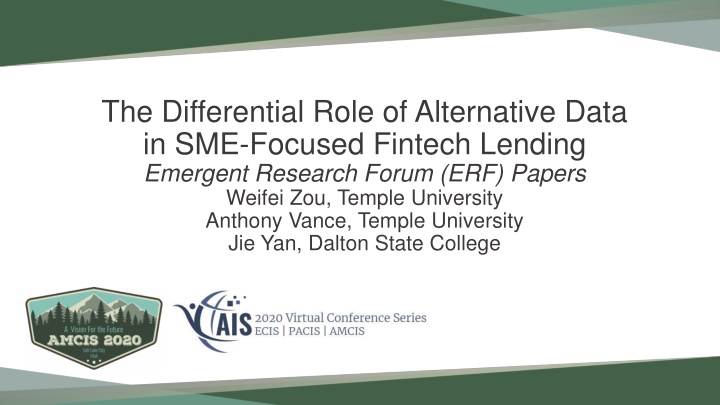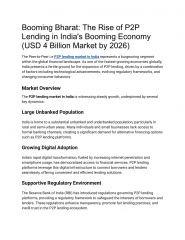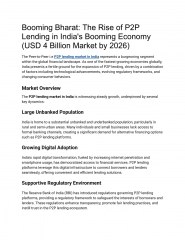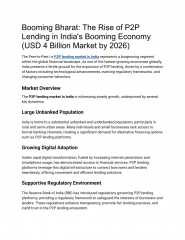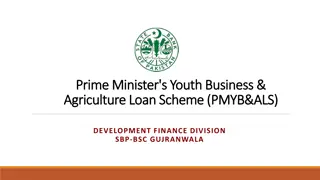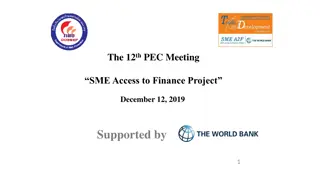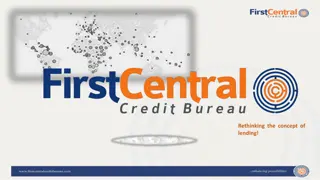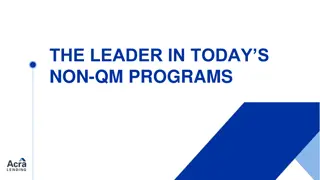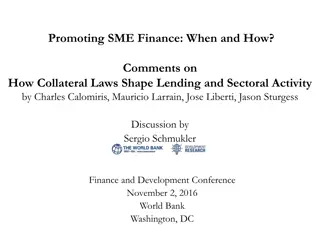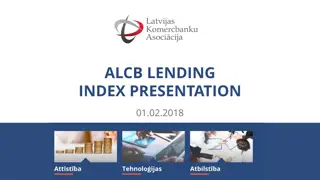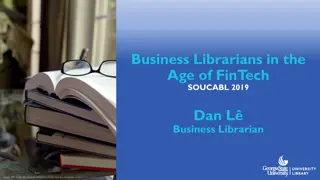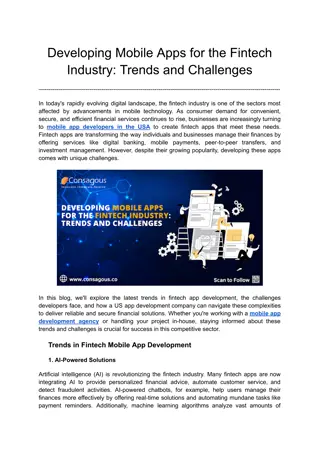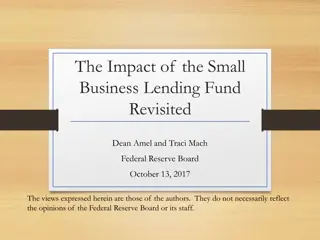The Role of Alternative Data in SME-Focused Fintech Lending
In SME-focused fintech lending, traditional and alternative data play crucial roles in credit evaluation and risk management. Explore the differential impacts, risks, and concerns associated with alternative data usage, and how combining traditional and alternative data can enhance risk mitigation strategies.
Download Presentation

Please find below an Image/Link to download the presentation.
The content on the website is provided AS IS for your information and personal use only. It may not be sold, licensed, or shared on other websites without obtaining consent from the author.If you encounter any issues during the download, it is possible that the publisher has removed the file from their server.
You are allowed to download the files provided on this website for personal or commercial use, subject to the condition that they are used lawfully. All files are the property of their respective owners.
The content on the website is provided AS IS for your information and personal use only. It may not be sold, licensed, or shared on other websites without obtaining consent from the author.
E N D
Presentation Transcript
The Differential Role of Alternative Data in SME-Focused Fintech Lending Emergent Research Forum (ERF) Papers Weifei Zou, Temple University Anthony Vance, Temple University Jie Yan, Dalton State College
Introduction Traditional data in small and medium-sized enterprise (SME) lending: Relate to firm and relationship characteristics (e.g., financial statements; the length and strength of a current SME-bank relationship) Alternative data: Data that are gathered from non-traditional data sources and not typically included in the traditional credit process Fintech lending: Use a broad variety and vast amount of structured and unstructured alternative data to mitigate information friction and augment risk management 2
Introduction Traditional data in small and medium-sized enterprise (SME) lending: Relate to firm and relationship characteristics (e.g., financial statements; the length and strength of a current SME-bank relationship) Alternative data: Data that are gathered from non-traditional data sources and not typically included in the traditional credit process Fintech lending: Use a broad variety and vast amount of structured and unstructured alternative data to mitigate information friction and augment risk management 3
Motivation Risks and concerns resulting from using alternative data a) Privacy concerns: data (e.g., bank accounts) can be sensitive b) Accuracy concerns: data are often incomplete and inconsistent c) Discrimination issues: data involves categories (e.g., gender and race) protected under fair lending laws Seek to answer the following research questions a) How alternative data types are different in credit evaluation and fraud detection of SME-focused Fintech lending b) How traditional and alternative data should be combined for better risk management in SME-focused Fintech lending 4
Motivation Risks and concerns resulting from using alternative data a) Privacy concerns: data (e.g., bank accounts) can be sensitive b) Accuracy concerns: data are often incomplete and inconsistent c) Discrimination issues: data involves categories (e.g., gender and race) protected under fair lending laws Seek to answer the following research questions a) How alternative data types are different in credit evaluation and fraud detection of SME-focused Fintech lending b) How traditional and alternative data should be combined for better risk management in SME-focused Fintech lending 5
Motivation Risks and concerns resulting from using alternative data a) Privacy concerns: data (e.g., bank accounts) can be sensitive b) Accuracy concerns: data are often incomplete and inconsistent c) Discrimination issues: data involves categories (e.g., gender and race) protected under fair lending laws Seek to answer the following research questions a) How alternative data types are different in credit evaluation and fraud detection of SME-focused Fintech lending b) How traditional and alternative data should be combined for better risk management in SME-focused Fintech lending 6
Methodology Context: A collaborative partnership between a leading Fintech company, FinTell, and a joint-stock commercial bank, LoanBank (a pseudonym), in China Dependent variables: Binary variables of Default and Fraud Data: The default and fraud event is based on the business loan-level data of LoanBank a) the data of LoanBank s loan applications between June 2015 to June 2017, a total of 3,773 applications from 3,732 SMEs, b) a total of 63 fraud reports are filed as of May 18, 2019, and c) a total of 42 loans, out of 1,325 applications that were approved, are labeled as default by LoanBank 7
Methodology Context: A collaborative partnership between a leading Fintech company, FinTell, and a joint-stock commercial bank, LoanBank (a pseudonym), in China Dependent variables: Binary variables of Default and Fraud Data: The default and fraud event is based on the business loan-level data of LoanBank a) the data of LoanBank s loan applications between June 2015 to June 2017, a total of 3,773 applications from 3,732 SMEs, b) a total of 63 fraud reports are filed as of May 18, 2019, and c) a total of 42 loans, out of 1,325 applications that were approved, are labeled as default by LoanBank 8
Methodology Independent variables (traditional data): financial ratios as well as the strength of an existing SME-bank relationship Independent variables (alternative data): transaction data and social media data Data traditional: a) three financial ratios including leverage, return on assets (ROA), and asset turnover (ATO), and b) the number of years that a current SME-bank relationship has lasted Data alternative: a) sales to purchasing, monthly shipping volume, and average inventory (year-end to year-end), and b) two variables of report quantity, report quality based on the social media data of WeChat Work 9
Methodology Independent variables (traditional data): financial ratios as well as the strength of an existing SME-bank relationship Independent variables (alternative data): transaction data and social media data Data traditional: a) three financial ratios including leverage, return on assets (ROA), and asset turnover (ATO), and b) the number of years that a current SME-bank relationship has lasted Data alternative: a) sales to purchasing, monthly shipping volume, and average inventory (year-end to year-end), and b) two variables of report quantity, report quality based on the social media data of WeChat Work 10
Methodology Logistic models to test the detective ability of each independent variable (i.e., odds of fraud and default) Head-to-head comparisons between each traditional data measure and corresponding alternative data measure The seemingly unrelated estimation (SUEST) was employed to test whether the coefficients (odds ratio) across the two logistic models are statistically different Overall, our head-to-head comparisons show that ATO, leverage, relationship and the quantity of social media report are statistically superior in fraud detection, compared to other variables (measures). 11
Methodology Logistic models to test the detective ability of each independent variable (i.e., odds of fraud and default) Head-to-head comparisons between each traditional data measure and corresponding alternative data measure The seemingly unrelated estimation (SUEST) was employed to test whether the coefficients (odds ratio) across the two logistic models are statistically different Overall, our head-to-head comparisons show that ATO, leverage, relationship and the quantity of social media report are statistically superior in fraud detection, compared to other variables (measures). 12
Alternative Data in SME-Focused Fintech Lending In this section we report some preliminary results, with fraud as the only dependent variable. Given that our dependent variables are binary, we developed logistic models to test the detective ability of each foregoing measure. We then conducted head-to-head comparisons between each traditional data measure and corresponding alternative data measure, a total of 22 comparisons for two different dependent variables. We conducted each comparison using the largest subsample of observations with no missing values in order to maximize the power and external validity of the test. We employed seemingly unrelated estimation (SUEST) to test whether the coefficients (odds ratio) across the two models are statistically different. Overall, our head-to-head comparisons show that ATO, leverage, relationship and the quantity of social media report are statistically superior in fraud detection, compared to other variables (measures). To further compare the four measures, we conducted the feature (i.e., measure) selection analysis using the logistic classifier with 10-fold cross-validation (see Dutta et al., 2017). The results in Figure 1 show that leverage, ATO and the social media report quantity were chosen for most folders in fraud detection, with 9, 10, and 9 out of 10 folds, respectively. We then focused on the three measures only and calculated the AUCs (area under the ROC curve) of different combinations 0.68 (Leverage, ATO), 0.65 (Leverage, Social_Quan), 0.67 (ATO, Social_Quan), and 0.72 (Leverage, ATO, Social_Quan). The ROC curves of combinations of leverage and ATO as well as leverage, ATO and social media report quantity with operating points are plotted in Figure 2. Table 1 further details the operating points with the corresponding number of false alarms. It shows that all three measures should be used if users desire a high level of performance. For example, at the 90% operating point, combining the three measures would have a total of 591 false detections, compared to 680 of using leverage and ATO only. Yet the leverage and ATO combination is superior if users desire fewer false alarms and a number of missed detections is acceptable. At the 30% operating point, for example, the number of false detections for using leverage and Preliminary Results ATO drops below 100, 70 versus 116 of combining all the three measures. 10 1 .8 Number of Folds .6 5 .4 .2 0 0 .2 .4 .6 .8 1 0 (Leverage, ATO): 0.68 (Leverage, ATO, Social_Quan): 0.72 Leverage ATO Relation Social_Quan Figure 1. Fraud: Selected Measures Figure 2. Fraud: ROCs and Operating Points (# Fraud: 18; # Obs. 950) (# Fraud: 18; # Obs. 950) Leverage, ATO Leverage, ATO, Social_Quan 100% 90% 741 652 80% 461 475 70% 447 274 60% 400 237 50% 288 186 40% 153 172 30% 70 116 20% 32 79 10% 23 32 680 591 Table 1. Operating Points and Number of False Alarms 13 Contributions and Future Plans This study will make several contributions. First, our study will extend the existing Fintech research in IS by focusing on the use of risk management Fintech in the banking sector. Unlike peer-to-peer lending and crowdfunding that have been extensively studied, risk management Fintech and its applications in banking have received little attention to date. Our research is one of the first to study the risk management Fintech and develop insights on the differential role of alternative data in SME-focused Fintech lending. By categorizing alternative data into different types and comparing them with traditional data, our findings will reveal how much predictive value each type of alternative data will add to both credit evaluation and fraud detection. In addition, our findings will help answer some important Americas Conference on Information Systems 4
Alternative Data in SME-Focused Fintech Lending In this section we report some preliminary results, with fraud as the only dependent variable. Given that our dependent variables are binary, we developed logistic models to test the detective ability of each foregoing measure. We then conducted head-to-head comparisons between each traditional data measure and corresponding alternative data measure, a total of 22 comparisons for two different dependent variables. We conducted each comparison using the largest subsample of observations with no missing values in order to maximize the power and external validity of the test. We employed seemingly unrelated estimation (SUEST) to test whether the coefficients (odds ratio) across the two models are statistically different. Overall, our head-to-head comparisons show that ATO, leverage, relationship and the quantity of social media report are statistically superior in fraud detection, compared to other variables (measures). To further compare the four measures, we conducted the feature (i.e., measure) selection analysis using the logistic classifier with 10-fold cross-validation (see Dutta et al., 2017). The results in Figure 1 show that leverage, ATO and the social media report quantity were chosen for most folders in fraud detection, with 9, 10, and 9 out of 10 folds, respectively. We then focused on the three measures only and calculated the AUCs (area under the ROC curve) of different combinations 0.68 (Leverage, ATO), 0.65 (Leverage, Social_Quan), 0.67 (ATO, Social_Quan), and 0.72 (Leverage, ATO, Social_Quan). The ROC curves of combinations of leverage and ATO as well as leverage, ATO and social media report quantity with operating points are plotted in Figure 2. Table 1 further details the operating points with the corresponding number of false alarms. It shows that all three measures should be used if users desire a high level of performance. For example, at the 90% operating point, combining the three measures would have a total of 591 false detections, compared to 680 of using leverage and ATO only. Yet the leverage and ATO combination is superior if users desire fewer false alarms and a number of missed detections is acceptable. At the 30% operating point, for example, the number of false detections for using leverage and Preliminary Results ATO drops below 100, 70 versus 116 of combining all the three measures. 10 1 .8 Number of Folds .6 5 .4 .2 0 0 .2 .4 .6 .8 1 0 (Leverage, ATO): 0.68 (Leverage, ATO, Social_Quan): 0.72 Leverage ATO Relation Social_Quan Figure 1. Fraud: Selected Measures Figure 2. Fraud: ROCs and Operating Points (# Fraud: 18; # Obs. 950) (# Fraud: 18; # Obs. 950) Leverage, ATO Leverage, ATO, Social_Quan 100% 90% 741 652 80% 461 475 70% 447 274 60% 400 237 50% 288 186 40% 153 172 30% 70 116 20% 32 79 10% 23 32 680 591 Table 1. Operating Points and Number of False Alarms 14 Contributions and Future Plans This study will make several contributions. First, our study will extend the existing Fintech research in IS by focusing on the use of risk management Fintech in the banking sector. Unlike peer-to-peer lending and crowdfunding that have been extensively studied, risk management Fintech and its applications in banking have received little attention to date. Our research is one of the first to study the risk management Fintech and develop insights on the differential role of alternative data in SME-focused Fintech lending. By categorizing alternative data into different types and comparing them with traditional data, our findings will reveal how much predictive value each type of alternative data will add to both credit evaluation and fraud detection. In addition, our findings will help answer some important Americas Conference on Information Systems 4
Alternative Data in SME-Focused Fintech Lending In this section we report some preliminary results, with fraud as the only dependent variable. Given that our dependent variables are binary, we developed logistic models to test the detective ability of each foregoing measure. We then conducted head-to-head comparisons between each traditional data measure and corresponding alternative data measure, a total of 22 comparisons for two different dependent variables. We conducted each comparison using the largest subsample of observations with no missing values in order to maximize the power and external validity of the test. We employed seemingly unrelated estimation (SUEST) to test whether the coefficients (odds ratio) across the two models are statistically different. Overall, our head-to-head comparisons show that ATO, leverage, relationship and the quantity of social media report are statistically superior in fraud detection, compared to other variables (measures). To further compare the four measures, we conducted the feature (i.e., measure) selection analysis using the logistic classifier with 10-fold cross-validation (see Dutta et al., 2017). The results in Figure 1 show that leverage, ATO and the social media report quantity were chosen for most folders in fraud detection, with 9, 10, and 9 out of 10 folds, respectively. We then focused on the three measures only and calculated the AUCs (area under the ROC curve) of different combinations 0.68 (Leverage, ATO), 0.65 (Leverage, Social_Quan), 0.67 (ATO, Social_Quan), and 0.72 (Leverage, ATO, Social_Quan). The ROC curves of combinations of leverage and ATO as well as leverage, ATO and social media report quantity with operating points are plotted in Figure 2. Table 1 further details the operating points with the corresponding number of false alarms. It shows that all three measures should be used if users desire a high level of performance. For example, at the 90% operating point, combining the three measures would have a total of 591 false detections, compared to 680 of using leverage and ATO only. Yet the leverage and ATO combination is superior if users desire fewer false alarms and a number of missed detections is acceptable. At the 30% operating point, for example, the number of false detections for using leverage and Preliminary Results ATO drops below 100, 70 versus 116 of combining all the three measures. 10 1 .8 Number of Folds .6 5 .4 .2 0 0 .2 .4 .6 .8 1 0 (Leverage, ATO): 0.68 (Leverage, ATO, Social_Quan): 0.72 Leverage ATO Relation Social_Quan Figure 1. Fraud: Selected Measures Figure 2. Fraud: ROCs and Operating Points (# Fraud: 18; # Obs. 950) (# Fraud: 18; # Obs. 950) Leverage, ATO Leverage, ATO, Social_Quan 100% 90% 741 652 80% 461 475 70% 447 274 60% 400 237 50% 288 186 40% 153 172 30% 70 116 20% 32 79 10% 23 32 680 591 Table 1. Operating Points and Number of False Alarms 15 Contributions and Future Plans This study will make several contributions. First, our study will extend the existing Fintech research in IS by focusing on the use of risk management Fintech in the banking sector. Unlike peer-to-peer lending and crowdfunding that have been extensively studied, risk management Fintech and its applications in banking have received little attention to date. Our research is one of the first to study the risk management Fintech and develop insights on the differential role of alternative data in SME-focused Fintech lending. By categorizing alternative data into different types and comparing them with traditional data, our findings will reveal how much predictive value each type of alternative data will add to both credit evaluation and fraud detection. In addition, our findings will help answer some important Americas Conference on Information Systems 4
Future Plans Add a literature review section to summarize related studies and thereby further identify gaps and justify our research questions Add a theoretical background section focusing on organizational ambidexterity and conflict management (not really sure) Complete the method section by including the measures of multiple alternative data types (i.e., mobile App analysis and locational data, individual data, online reviews data and industry data) and examine their performance differences in credit evaluation and fraud detection 16
